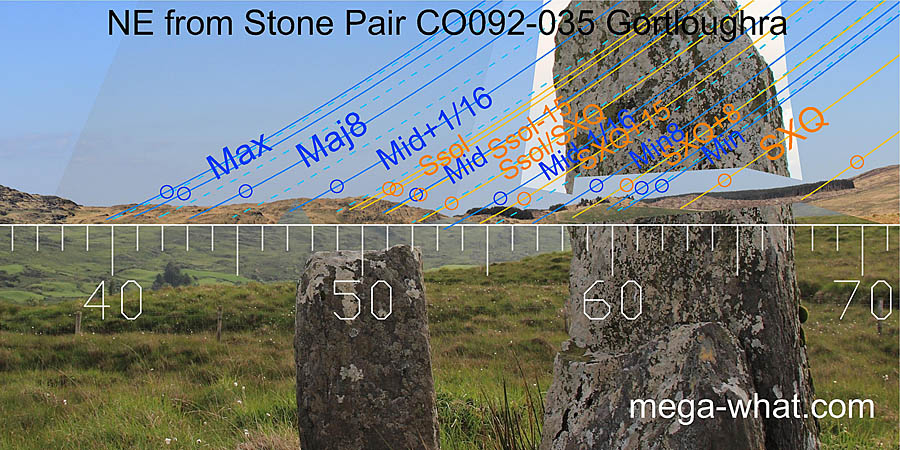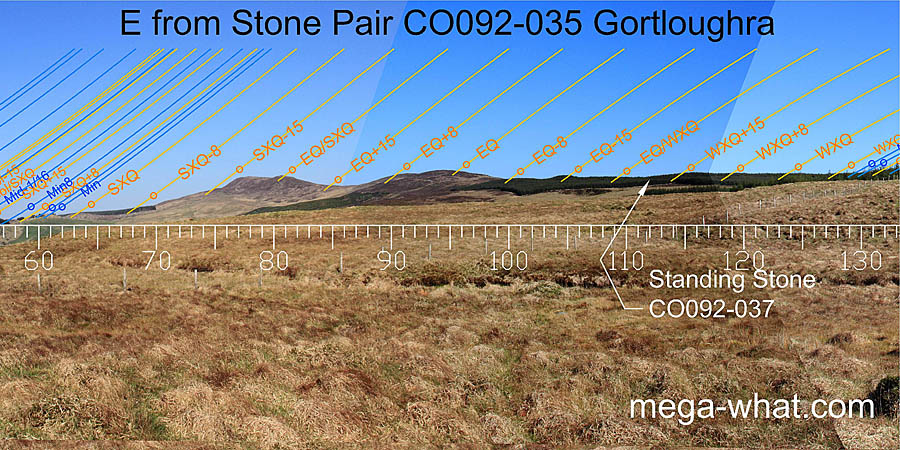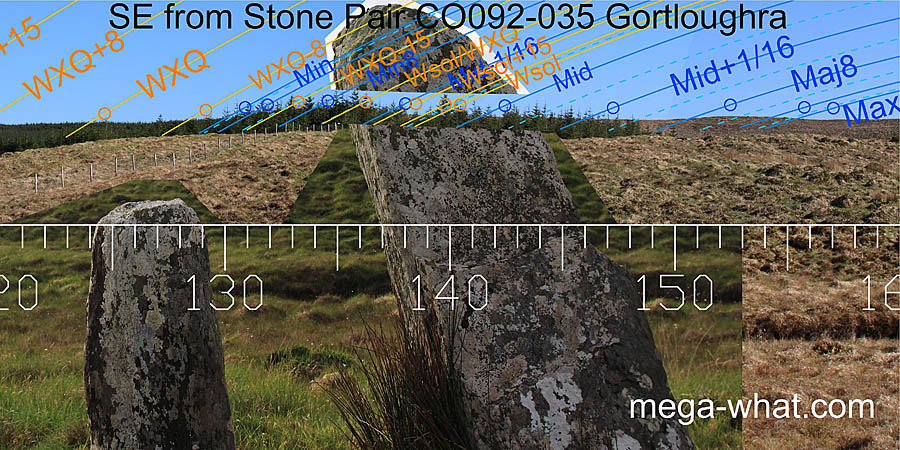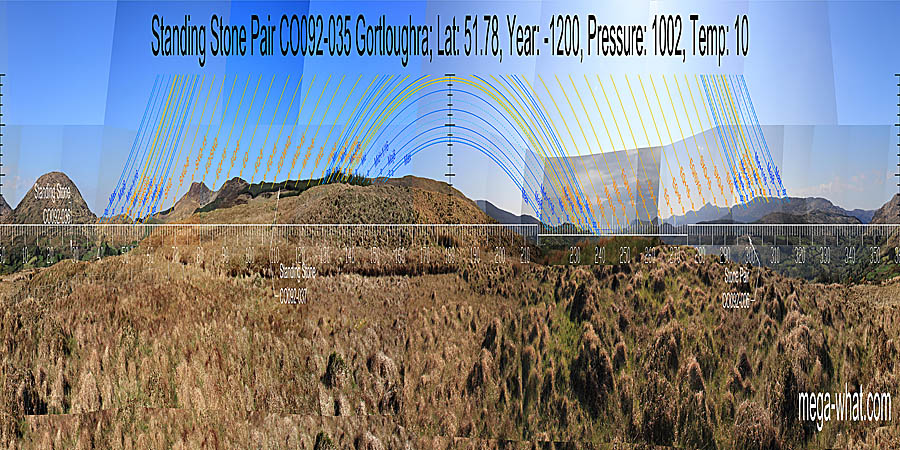 Gortloughra Standing Stone Pair is about 8km north-east of Kealkill, by the road to Inchigeelagh.
Its overall axis is about 20° clockwise from due N/S but the smaller stone has a square section and has been cannily placed.
Gortloughra Standing Stone Pair is about 8km north-east of Kealkill, by the road to Inchigeelagh.
Its overall axis is about 20° clockwise from due N/S but the smaller stone has a square section and has been cannily placed.
Northern lunisticesLunistices are the most northerly and southerly moons of the month. The lunar equivalent of solstices - more. and the summer sun rise from a dip and set across a hilltop. Southern lunisticesLunistices are the most northerly and southerly moons of the month. The lunar equivalent of solstices - more. and the winter sun rise from a hilltop and set into a dip.
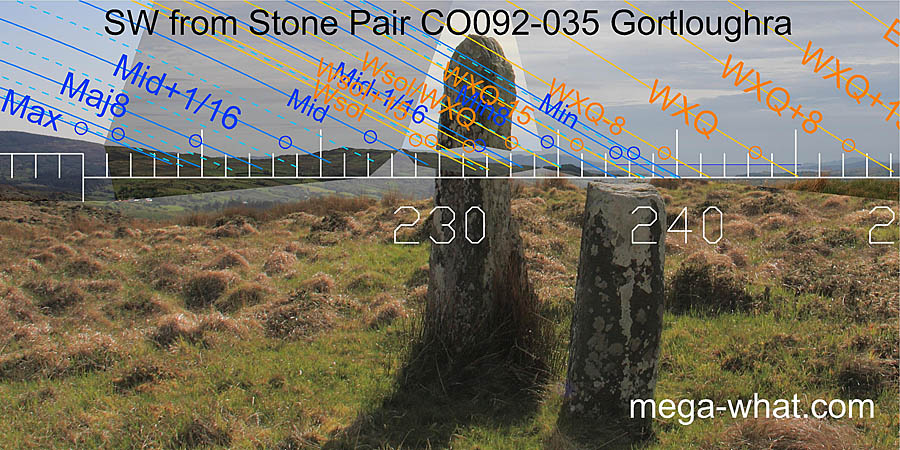
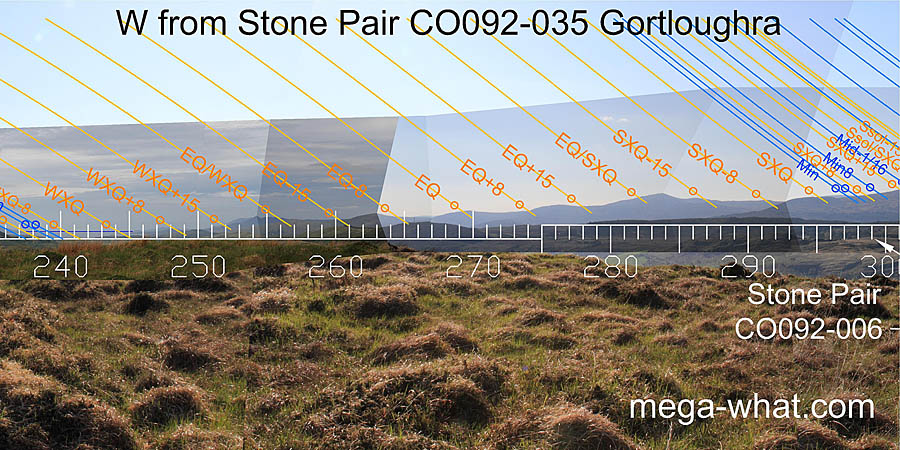
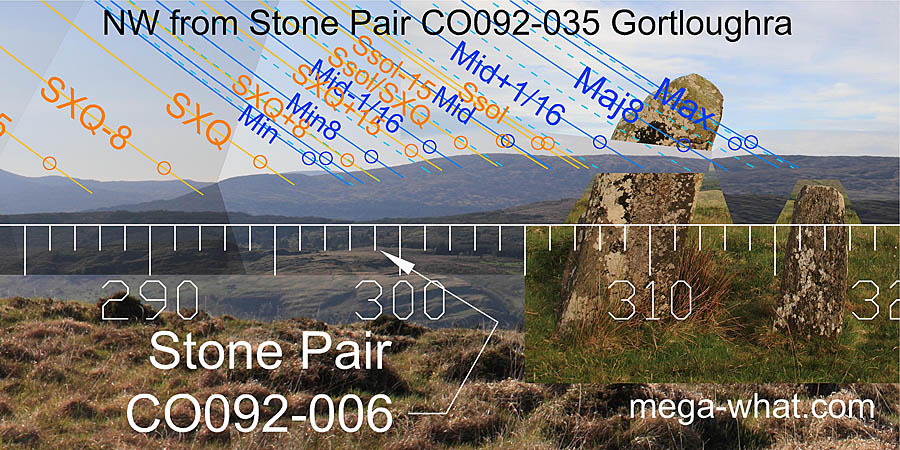 The smaller stone is set so that its slightly longer axis indicates summer solstice sunrise to the NE and minor standstillLunistice positions vary cyclically over an 18.6 year period but are fairly static for more than a year at either end of the range
to the SW.
Its shorter axis is just beyond major standstillLunistice positions vary cyclically over an 18.6 year period but are fairly static for more than a year at either end of the range
to the NW and short of minor standstillLunistice positions vary cyclically over an 18.6 year period but are fairly static for more than a year at either end of the range
to the SE.
The smaller stone is set so that its slightly longer axis indicates summer solstice sunrise to the NE and minor standstillLunistice positions vary cyclically over an 18.6 year period but are fairly static for more than a year at either end of the range
to the SW.
Its shorter axis is just beyond major standstillLunistice positions vary cyclically over an 18.6 year period but are fairly static for more than a year at either end of the range
to the NW and short of minor standstillLunistice positions vary cyclically over an 18.6 year period but are fairly static for more than a year at either end of the range
to the SE.
The long axis of the tall slab splits the difference between major standstillsLunistice positions vary cyclically over an 18.6 year period but are fairly static for more than a year at either end of the range and North [Pic] / South [Pic], both of which are at the right-hand end of hilltops.
Looked at from the side, the tall stone indicates the general directions of equinox sunrises and equinox/summer cross-quarter sunsets.
- Standing Stone CO092-036 is 160m away @ 29° but hidden by the lie of the land. From there the north-east is more lunar, the north mark is less accurate and both south-eastern & south-western lunisticeLunistices are the most northerly and southerly moons of the month. The lunar equivalent of solstices - more. zones fall on very local ground to give conformity of fit but no real precision. The east and north-west are arguably better from there than from here though.
- Cappaboy Beg Stone Pair is across the valley, c.2km to NW (299°)
- Another Stone Pair is beside Kealkill Stone Circle, 7km to the south-west (237°)
References
- Archaeological Survey of Ireland, record details. www.archaeology.ie/archaeological-survey-ireland
- POWER, D. et al. 1992 Archaeological Inventory of County Cork, Volume 1: West Cork. Dublin: Stationary Office. p41, no.187.
- Ó'NUALLÁIN, SEÁN 1988 Stone Rows in the South of Ireland. Proceedings of the Royal Irish Academy 88c:179-256, p245, no.112.

